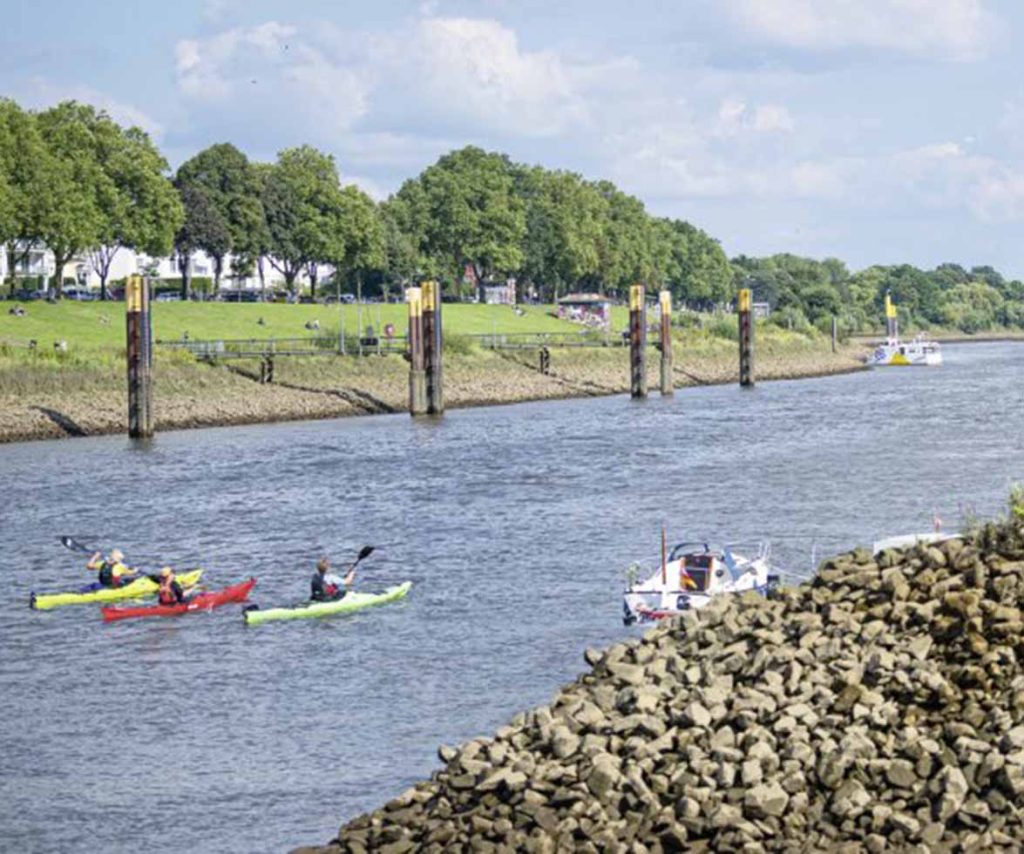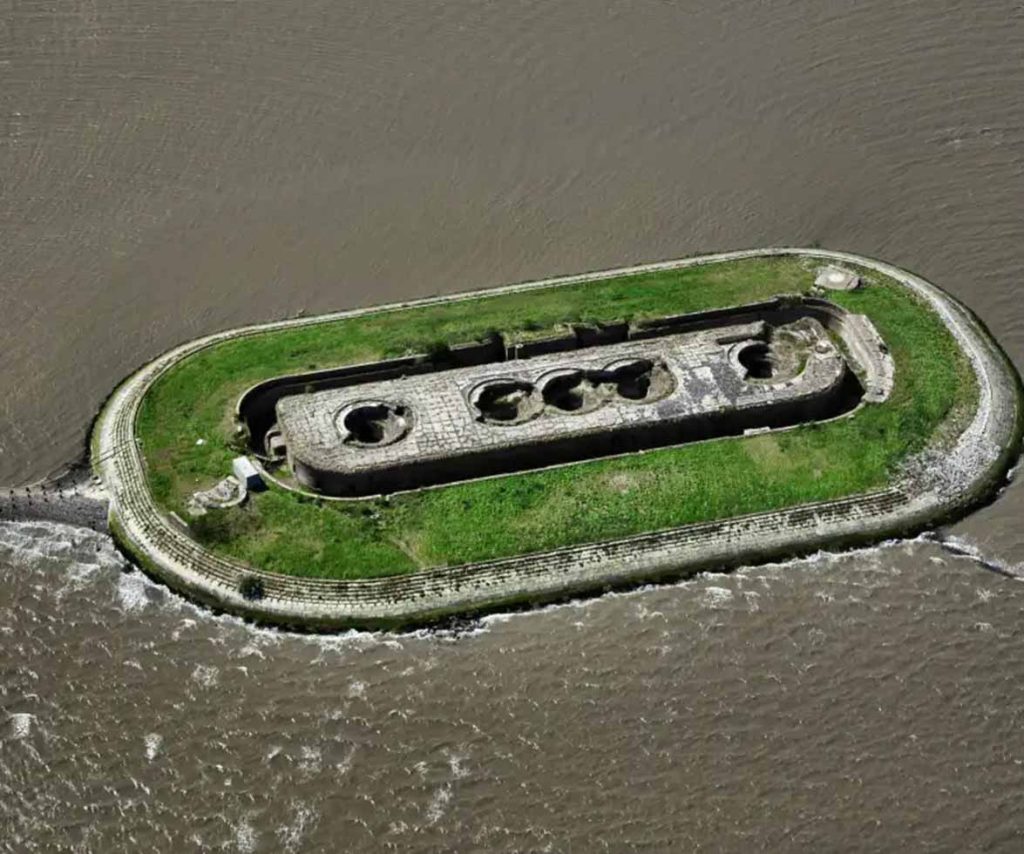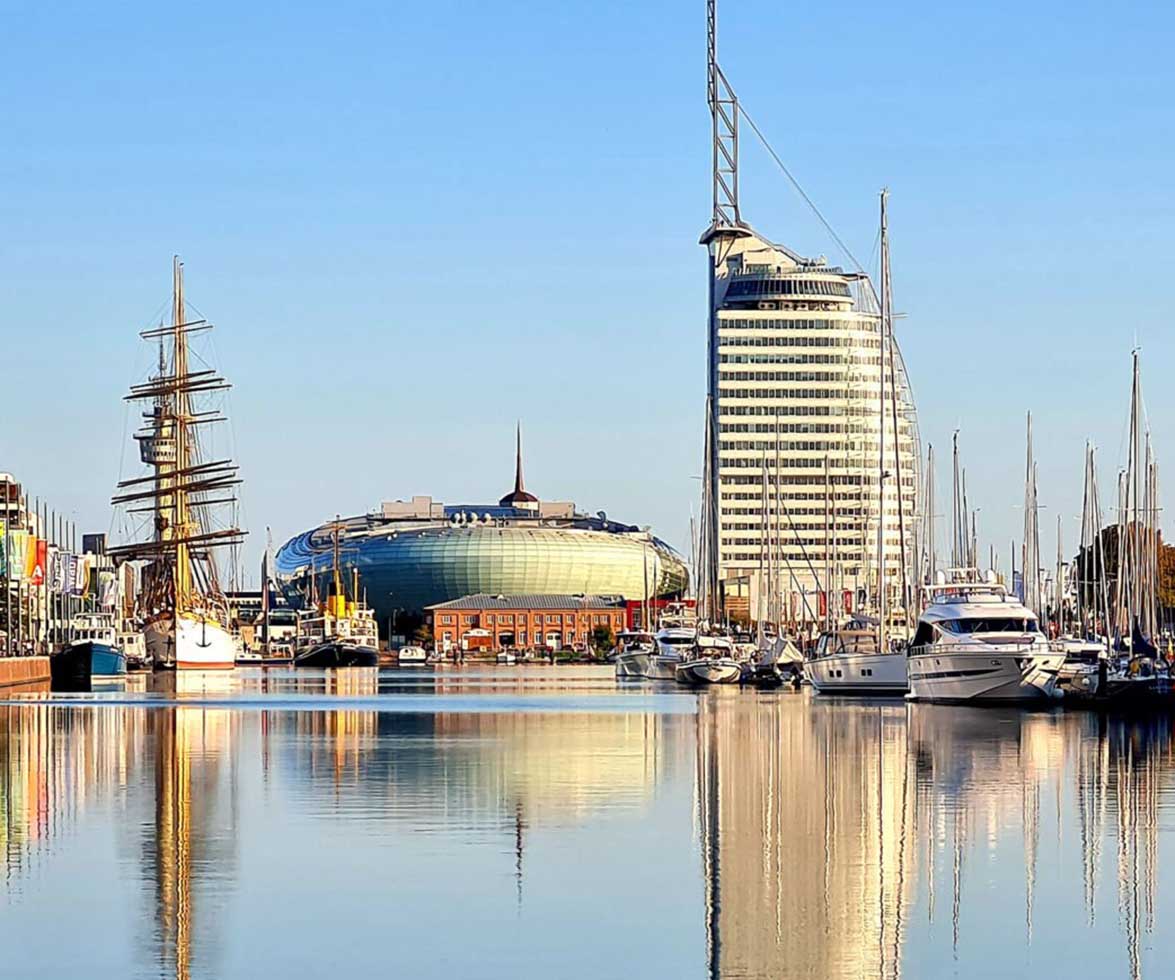The sky over the North Sea was painted with brushstrokes of grey and blue as I stepped onto the coastal promenade of Bremerhaven. There was a crispness in the air that comes only from places near open water. The kind that makes your lungs feel cleaner with every breath, your thoughts a bit clearer, your pace just a touch more deliberate. I arrived in Bremerhaven with the specific intention of seeing it not from behind windows or from car seats, but on foot, and at eye-level with the sea.
What awaited me was a trail that meandered along the edge of the city, hugging the shoreline, offering vistas of ships, sky, and wind-whipped waves, all while weaving past old maritime relics and modern glass towers. Bremerhaven’s coastal walk is not just a path — it’s a thread connecting stories of departure and return, trade and war, solitude and curiosity. I walked it all — from the industrial ports to the green banks of the Weser estuary — and what follows is a detailed retelling of each footstep.
1. Beginning the Journey: From Havenwelten to the Klimahaus
I started early, just after sunrise. The light hadn’t fully asserted itself yet, so the promenade glowed in silvery tones. I began at Havenwelten, Bremerhaven’s tourism and cultural district. It’s a compelling blend of the old maritime identity and new sustainability-focused developments. On one side, the towering sail-shaped Atlantic Hotel Sail City loomed, and directly ahead, the Klimahaus presented its futuristic, curved silhouette.
Even before taking my first serious stride, I paused often. A group of gulls wheeled overhead, their cries sharp against the gentle lapping of water against concrete. Morning joggers passed, most with earphones in, moving briskly but nodding in greeting. I stepped off the paved square and onto the beginning of the promenade path — a stone-edged, smoothly maintained trail that follows the contour of the shoreline.
2. Along the Weser: A River That Feels Like the Sea
As I walked along the Weser River, the wind began to pick up, tugging at the collar of my jacket. To the right, the river looked nearly indistinguishable from the sea — a wide, grey expanse with waves crowned in white. The path was flat and even, but not without character. Iron bollards, old mooring posts, and bronze plaques marked historical shipping points along the way.
Here and there, I found interpretive panels — in German, but illustrated well enough to decipher. They showed images of emigrants boarding ships to America, families with trunks and shawls, faces turned west. This part of Bremerhaven saw more than seven million people pass through between 1830 and 1974, leaving for new lives across the Atlantic.
I lingered at one such plaque, picturing the chaos of that time — horses pulling carts, seamen barking orders, the clatter of hooves and hope. Then I kept walking. The wind seemed to carry some of those voices with it, faint and indecipherable but persistent.

3. Crossing Paths with the Harbor: A Study in Contrast
Midway through the route, the path curves inward toward the commercial harbor. It was here that the tone of the walk changed. Nature gave way to industry — container cranes, stacked shipping boxes in every color imaginable, and the low hum of dockside machinery.
I stood on a pedestrian bridge that spanned one of the side canals. From there, I had an unimpeded view of the immense vessels that call Bremerhaven home. They seemed almost too big for the river, massive hulls that blocked the horizon, stacked high with containers from Shanghai, Singapore, Rotterdam.
This section of the walk wasn’t traditionally scenic, but I found it captivating. The sharp geometry of cranes against the sky, the rhythmic clanging of metal, the choreography of trucks and forklifts — all part of a complex system that rarely gets the admiration it deserves. I rested here, leaning against the railing, eating a piece of fruit I’d brought in my backpack, watching the dockworkers move with efficiency honed over generations.
4. Toward the Zoo am Meer: Coastal Cliffs and Open Water
As the harbor receded behind me, the promenade returned to a more natural feel. Grassy banks lined the edge of the path now. A group of cyclists passed, the clicking of their gear shifts growing and fading like passing waves. The Zoo am Meer came into view on my left — a compact, ocean-themed zoo perched right on the water’s edge. I didn’t stop in, but I could hear the muffled roars and calls of animals mixed with the chatter of visitors inside.
What caught my attention here, though, wasn’t the zoo — it was the sudden openness of the view. The trail curved around a bend and then there it was: the full stretch of the North Sea, with nothing but waves and sky ahead. The coast path climbed slightly, giving a gentle elevation from which I could see ferries crossing in the distance. I could even make out the offshore wind farms — distant white turbines, slowly rotating like the hands of an invisible clock.
5. The Deich: Walking the Dike that Keeps the Sea at Bay
The terrain changed again as I continued northward. The path now followed the top of the “Deich” — the long earthen dike that protects Bremerhaven from the sea. This was one of my favorite parts of the entire walk.
The trail became a grassy ridge, high above the adjacent farmland and salt marshes to the east. Sheep grazed lazily along the slopes, utterly unfazed by my presence. The sea wind was stronger here, uninterrupted and unfiltered. At times, it pushed against me hard enough to change my stride. I tightened my scarf, buried my hands deeper into my coat pockets, and kept going.
From this vantage point, everything felt layered. Behind me was the city — its cranes, towers, and lighthouses. Beside me, the ever-changing sea. Below, the quiet pastoral scene of sheep and reeds. I paused often to take it in, wishing I had more than just my phone camera.
6. Moments of Stillness at Langlütjen Island Viewpoint
Farther along, the promenade gave way to a less maintained section. It wasn’t neglected — just more natural, less curated. Wooden posts marked the edges, and the grasses grew taller. Here, I found a bench facing the sea, with a metal plaque that identified the distant speck of Langlütjen Island — a small, uninhabited island once used for military purposes.
The sun had begun to lower itself in the sky by then, casting the whole seascape in tones of amber and rust. I sat for a long time without moving. The water shimmered, the sky blushed, and even the wind seemed to settle.

The only sounds were natural — the rustling of dried sea grass, the distant flapping of sails, the occasional cry of a lone seabird. I thought of how many people must have walked this same path, stopped at this same bench, and looked out at this same expanse.
7. Returning by the Inner Route: Through Parks and Residential Bremerhaven
Not wanting to repeat the same path back, I chose to return through a different route — one that led slightly inland, through parks and residential areas. The shift in scenery was dramatic. From the vastness of sea and dike, I was now walking through neat gardens, tidy rows of houses, and small playgrounds filled with local children.
One park stood out — Bürgerpark, a green oasis tucked behind a row of houses. I walked through its winding paths, past still ponds and under tall trees whose leaves shimmered in the breeze. A couple sat on a bench feeding ducks; a group of teenagers played some form of outdoor chess with oversized pieces.
The pace of life here felt slower, more grounded. The sea was out of sight now, but I could still smell it faintly. It had soaked into my clothes, into the fibers of the day itself.
8. A City that Walks with Its Past
As I made my way back toward Havenwelten and my starting point, the day’s light was nearly gone. The Atlantic Hotel had lit up, casting reflections onto the water. The Klimahaus was illuminated, its glass façade glowing like the hull of a ship under construction.
The entire walk had taken nearly nine hours with breaks and pauses. I wasn’t racing time — I wanted to walk as if I had no destination other than the next few steps. And Bremerhaven, in its honest blend of old maritime legacy and modern seafront development, offered exactly that kind of experience.
Walking along its coastal trail wasn’t just about views. It was about texture — the changing feel of the ground beneath your feet, the switch from the call of gulls to the hum of ship engines, the way sea air can make even the simplest moment feel layered and cinematic. I ended the day not tired, but quietly charged — like a well-used compass finally pointing north again.
